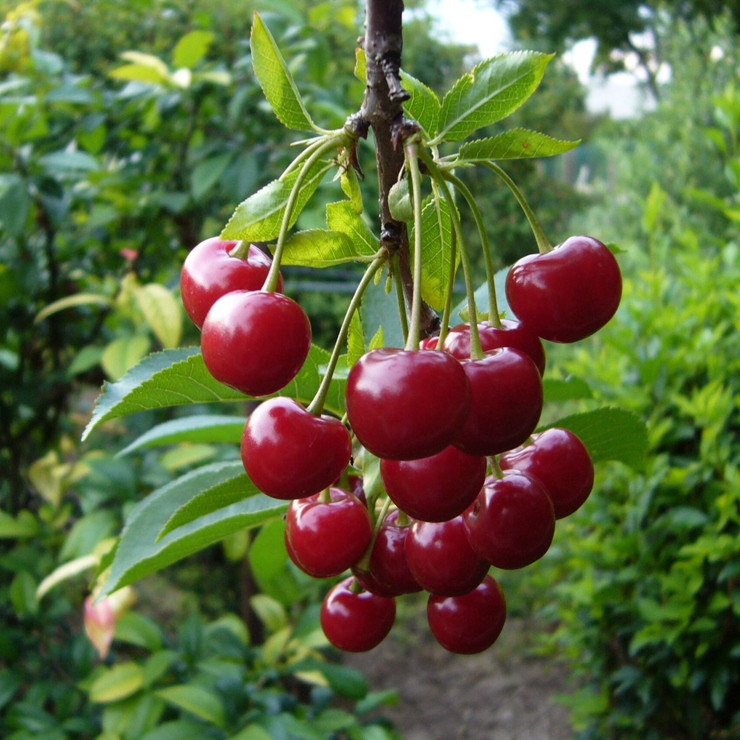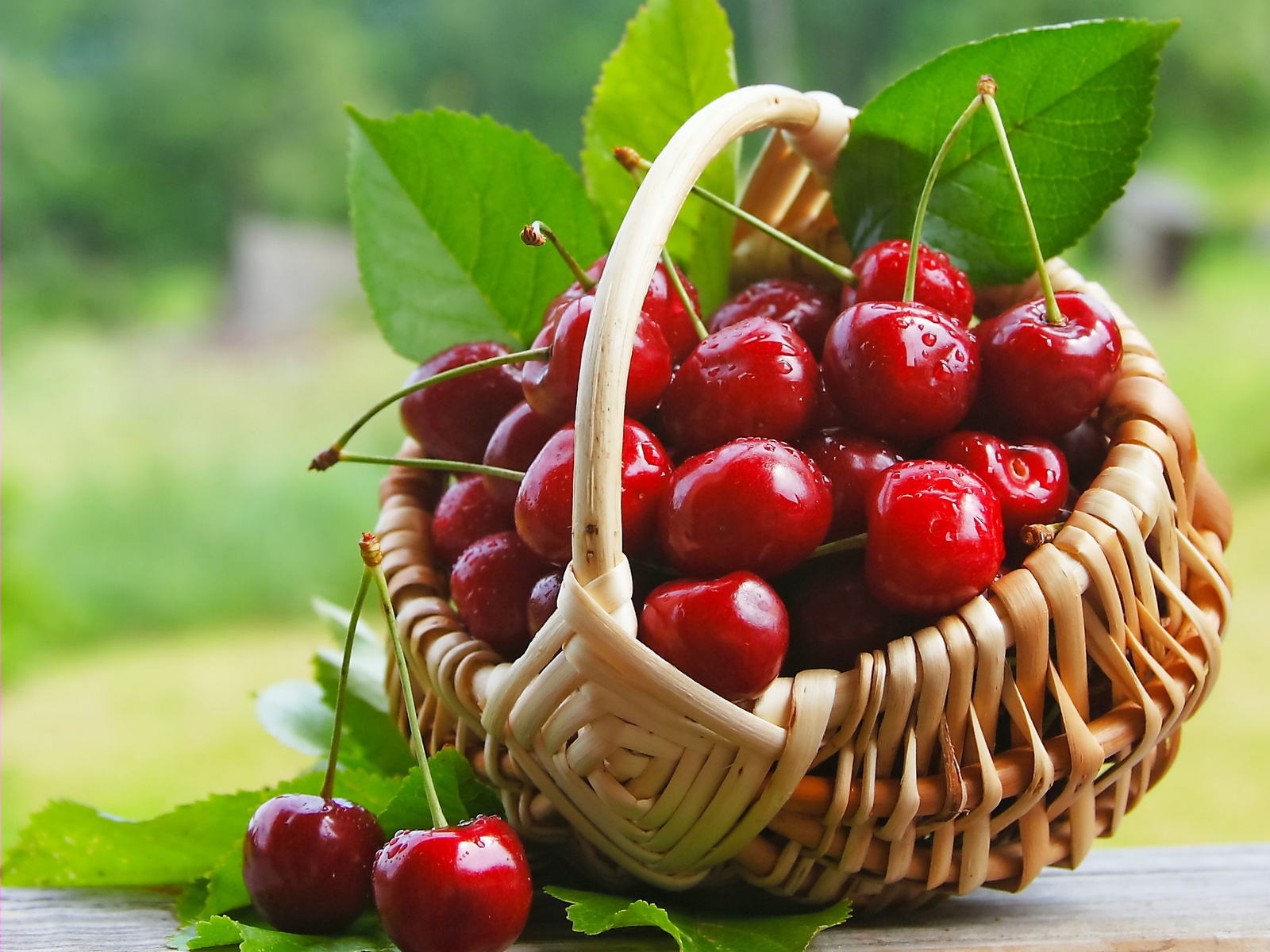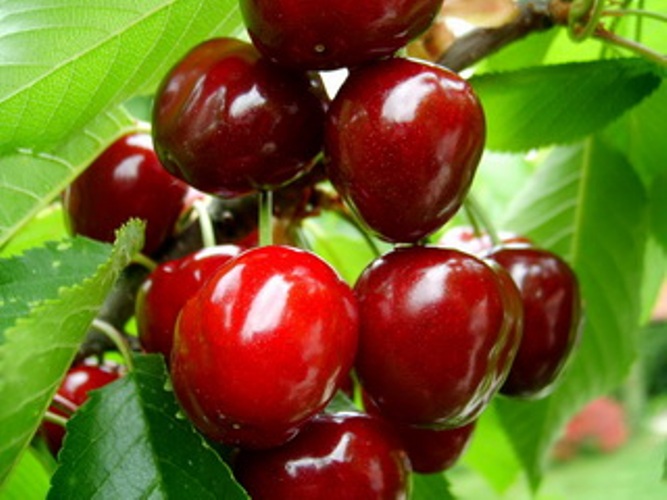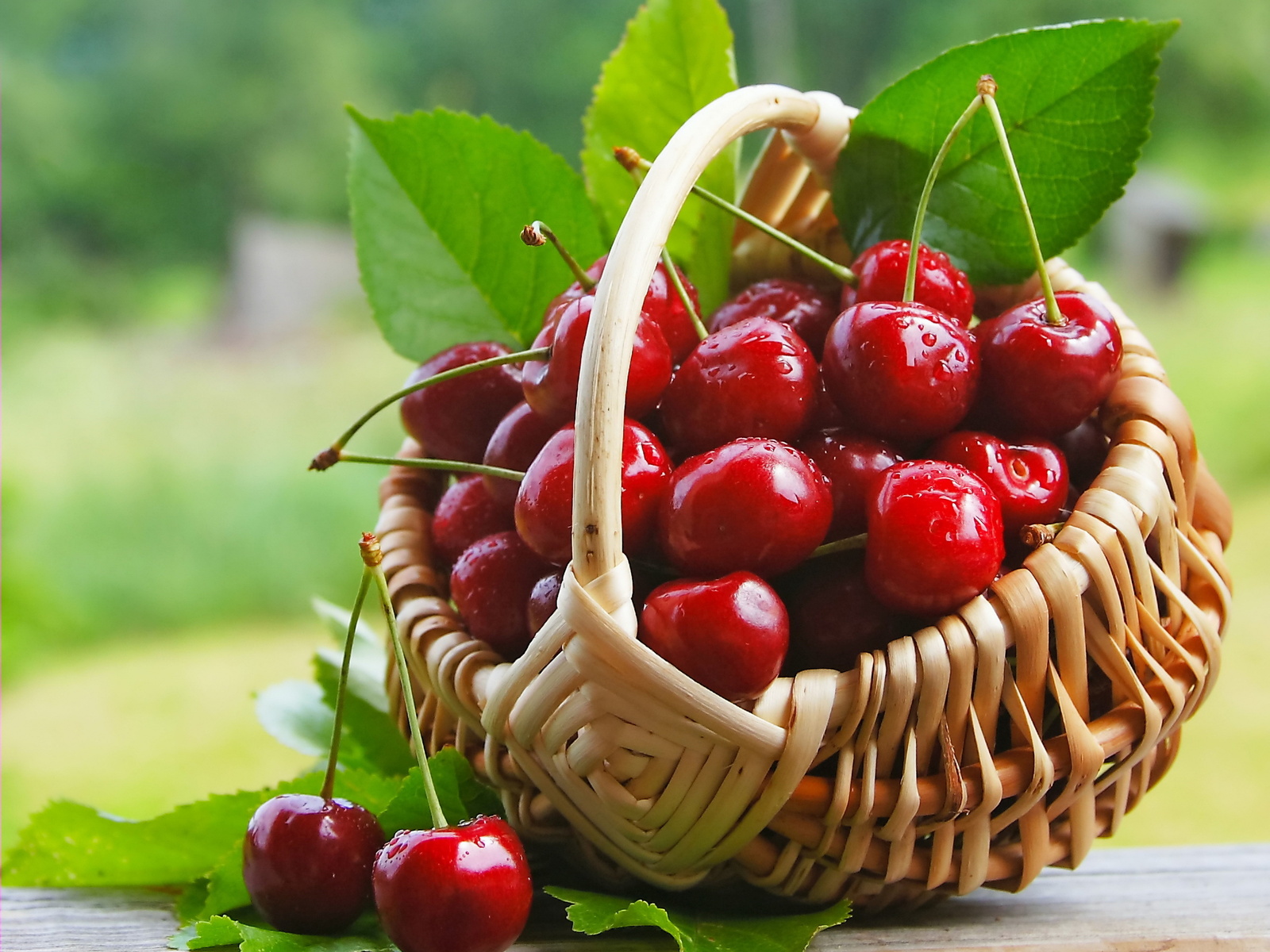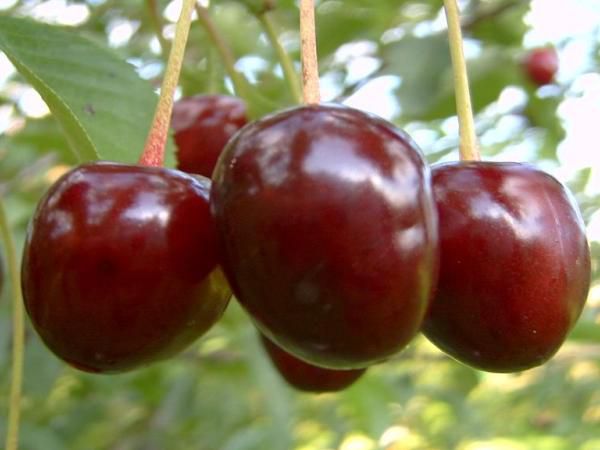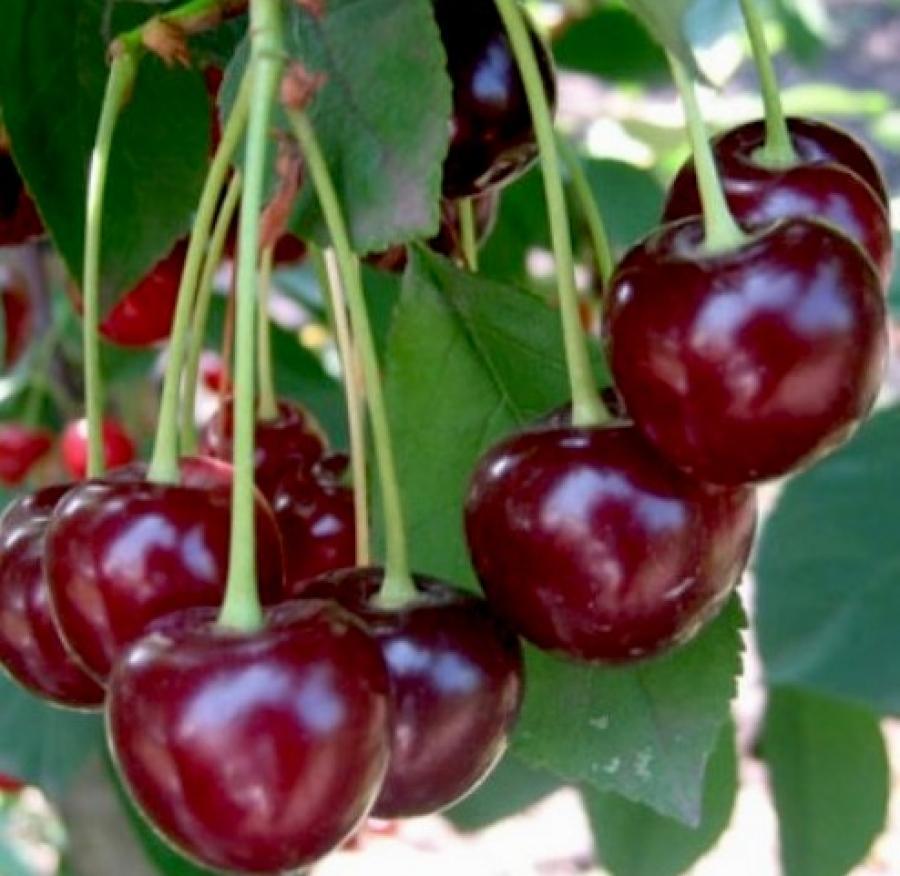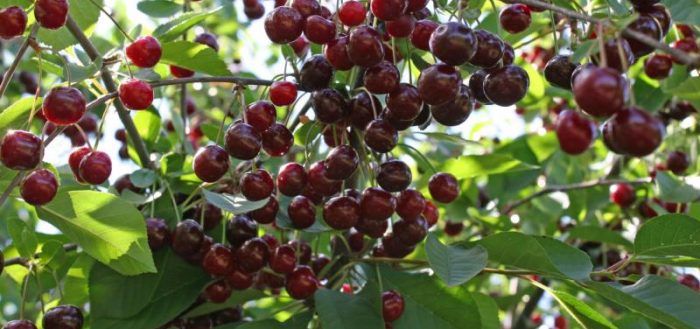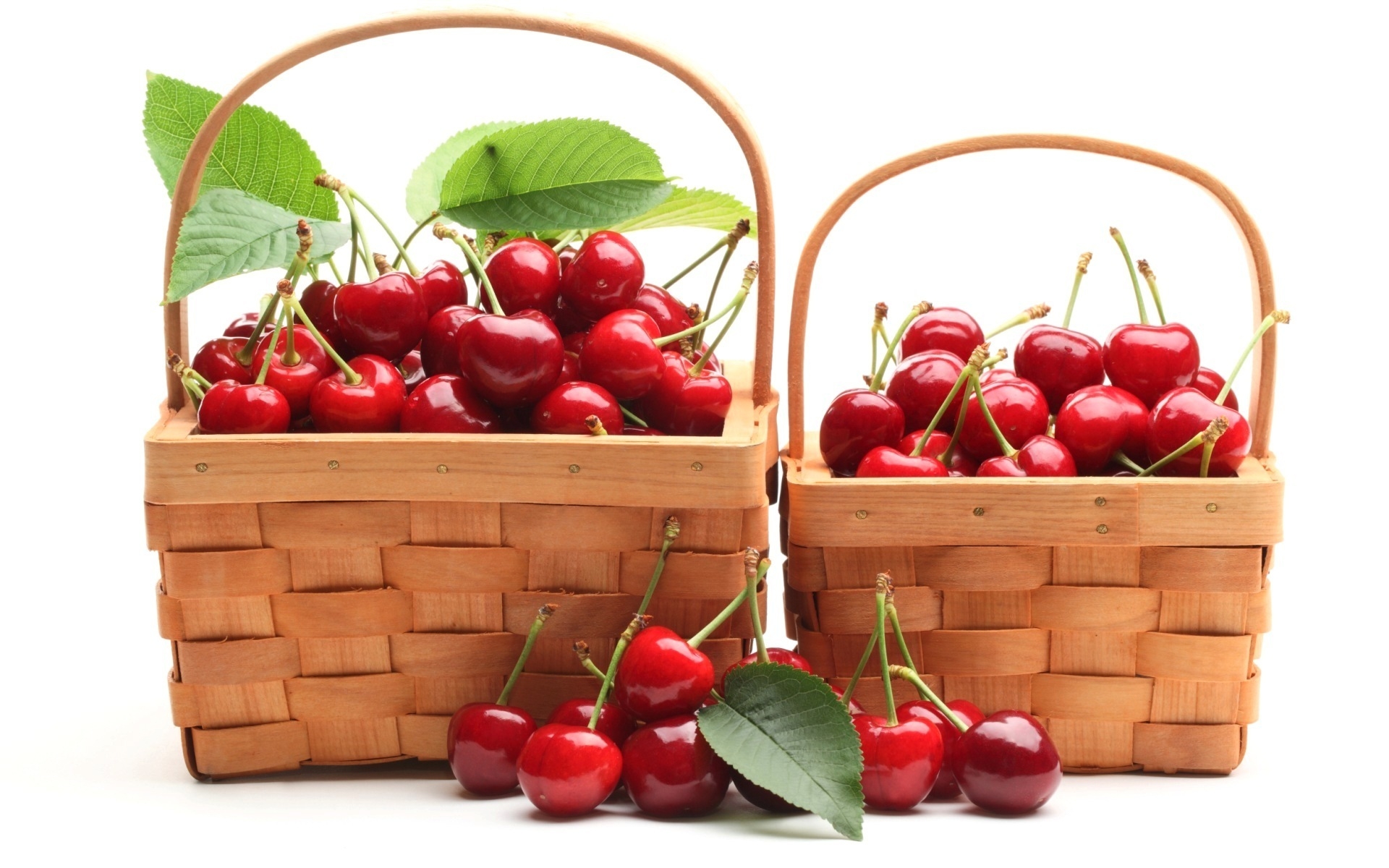Content:
Cherry trees have been grown in gardens for centuries. Currently, thanks to the efforts of breeders, more than 190 varieties of these stone fruit trees have been bred for growing, which differ in appearance, characteristics and taste of berries. All these cherry trees are divided into two varieties: tree and bush.
Shrub varieties are low, frost-resistant, easy to cut and harvest, their average lifespan is up to 18 years.
Treelike varieties are fruit trees, reaching a height of more than 2.5 m. Their lifespan is more than 25 years, but with low resistance to cold. Cherry Shubinka belongs to this type, the main advantages and characteristics will be discussed below.
The history of the creation of the variety
This variety has been grown in the gardens of Russia for more than one century and in popularity among cherry varieties it ranks second after the well-known Vladimir variety. For the first time, seedlings of this cherry appeared in the Moscow province at the end XIX century. Due to its advantages, the variety quickly gained popularity and spread to other provinces.
In the mid-50s of the last century, the variety was zoned for cultivation in the North-West, Central regions and in the Volga region. Soon, Shubinka cherries began to be cultivated in almost all regions of Russia and other union republics of the Soviet Union.
But soon new, more productive and frost-resistant varieties appeared, and Shubinka was no longer grown for industrial purposes, and summer residents in young gardens tried to grow more modern varieties of cherries.
Description of cherry variety Shubinka
The height of the main trunk is more than 3.8 m, the crown is pyramidal in shape, medium spreading, there are not very many side shoots. The main branches are of medium thickness, dark brown in color. Thinner shoots extend from the main branches, the bark of which is light brown with a green tint and a grayish bloom.
The foliage is of a dark emerald hue, medium size, oval in shape, the bases and ends are sharp. Small denticles are located along the edges. Flowers - five-petal, white, arranged in bunches of 4-5 pieces. The petals are pressed loosely against each other, the ends are bifurcated.
Berries are smaller than average in size, round, slightly flattened at the side seam. The mass of a ripe fruit is about 2.5 g. Their color is dark ruby. The pulp is slightly loose, dark red in color, with a pleasant fruity aroma, but sour and slightly astringent.
The stone is small, it separates poorly from ripe pulp. The fruit stalks, on which the berries are held, are long - more than 5-7 cm, so ripe berries hold on to them tightly and do not crumble even when overripe.
Shubinka belongs to varieties with a late ripening period, the harvest from these trees is harvested from the first decade of August to the last decade of September.
After planting seedlings in a permanent place, young trees begin to bear fruit after 4 years. Up to 22-24 kg of ripe fruits are harvested from one adult tree.
This variety is partially self-pollinated, therefore, it is advisable to plant other varietal varieties of pollinating cherries nearby, for example, Vladimirskaya, Lyubskaya, Griot Moscow, Sayka.It is better not to plant cherries as a pollinator next to Shubinka cherries, since cross-pollination will not work.
To attract bees and wasps as pollinators, you can treat the buds and flowers of a tree with a solution of honey (dissolve a tablespoon of honey in warm water and spray the flowers).
The characteristic of the Shubinsky variety will be incomplete without a story about its resistance to frost. The winter hardiness of this cherry is slightly above average, it easily tolerates cold temperatures down to -30⸰С, as well as spring frosts. However, at frost temperatures of about 34 ° C, flower buds and young shoots can freeze in these plants. Therefore, young trees (up to 4-5 years of age) should be covered for the winter.
However, if you choose the right place for planting cherries, apply top dressing, you can significantly increase its resistance to frost.
Growing and caring for cherry seedlings
In order for this variety to actively grow and bear fruit, and in winter not to suffer from severe frosts, it is necessary to choose the right place for planting seedlings. The main requirements are sandy loam or loamy soil near a solid fence or near the wall of outbuildings. In a lowland, where groundwater comes close to the surface of the earth, it is better not to plant this plant - it will either develop poorly, or it may soon simply die, as the roots will quickly rot.
Prepare a site for planting seedlings in the fall. For digging, apply the following fertilizers (per sq. M):
- 10 kg of cow dung,
- 1.5 tbsp. l. potassium sulfate,
- incomplete glass of superphosphate.
Then the site is dug up, deepening the fertilizers by about 10-12 cm into the soil so that all nutrients remain in the soil, without leaving with melt water during massive snow melting.
They begin to dig planting holes in the spring, when the soil warms up to 14-16⸰С. The depth of the hole must be at least 0.6 m, the radius must be 0.5 m.The distance between the trees must be at least 5.5 m.
A stake with a height of at least 1.4 m is driven into the bottom of the pit, to which a seedling should be tied so that during the process of acclimatization the young tree does not tilt to the side under strong gusts of wind. Also, the bottom of the pit is lined with pieces of bark - this will be a drainage layer. The next layer should consist of the following mixture:
- 40 kg of rotted cow dung,
- 7 kg of horse manure,
- 10 kg of top soil.
It is better to buy seedlings in the nursery, where you can choose the strongest and healthiest plants. If only open-rooted trees are on sale, you should carefully examine their root system. It should be firm and healthy, free from fractures and other damage. The crown of the tree should be correctly formed, the branches should be strong and strong.
The shoot is placed in a pit, the roots are straightened along the diameter of the pit, the trunk is tied to a peg. Then the hole is buried, the soil is tamped and 3-4 buckets of water are poured under each tree. A layer of mulching material (sawdust, humus or compost) is applied from above around the trunk circle.
During the first season after planting, no fertilizer is applied under the cherry. You should only regularly water, loosen the soil and remove weeds. And only in the next season can you start feeding the cherries with nitrogen-potassium fertilizers. In late September - early October, a top dressing consisting of potassium and phosphorus salts should be added to the trunk circle.
In the future, the number of dressings increases:
- during the budding period, carbonic acid diamide and potassium sulphide salt are introduced into the trunk circle;
- during the ripening period of berries, a solution of nitrophoska is introduced;
- after harvesting and foliage falling, a complex fertilizer containing phosphorus and potassium salts is applied to the trunk circle. For digging, organic matter is additionally introduced.
The first pruning is carried out during planting of the seedling in a permanent place. During this procedure, only a few main shoots are left (no more than 5), the rest are completely cut out, and the trunk itself is shortened by 1/3.
For the first 5 seasons, formative pruning is carried out every spring. After the main skeletal backbone of the tree from 5-6 main branches is formed, the formative pruning is no longer carried out. Dry, broken or frost-damaged shoots are removed only as needed. It is also required to regularly deal with root shoots.
Harvesting
You can harvest this cherry tree from the first days of August to the last days of September. The longer ripe cherries hang on the tree, the better their taste becomes. You should not pick pink, underripe cherries - they have a completely sour taste, they cannot be eaten and they are not suitable for conservation.
Advantages and disadvantages of the variety
The main positive qualities of this variety include:
- high resistance to frost;
- partial self-pollination;
- sufficiently high yield.
But the variety also has disadvantages.:
- there is little sugar in the berries, therefore, fresh fruits are not used;
- Cherry Shubinka has low resistance to coccomycosis.
But, despite the shortcomings, cherries of this variety are still popular in different parts of our country. The hostesses say that ripe berries of this variety make delicious jams and preserves.
